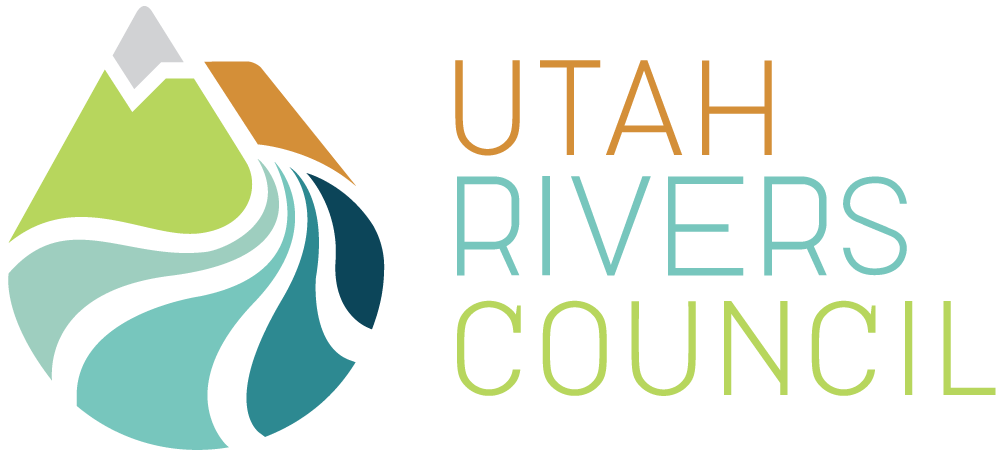Behind the Scenes with Bill Author Lindsey Hutchison on the Great Salt Lake Contingency Plan
The Utah Rivers Council just announced its Great Salt Lake Drought Contingency proposal, a bill that has received sponsorship from Representative Douglas Sagers (R) from Tooele. Because citizens and elected officials are all interested in saving the American West’s largest lake and namesake of Utah’s capital city, the bill has gotten a lot of attention. To answer some popular questions, we turned to the bill’s original author, Utah Rivers Council Water Policy Associate Lindsey Hutchison.
What inspired you and the Utah Rivers Council to write this bill?
The Great Salt Lake has been on the minds and in the hearts of the Utah Rivers Council’s supporters and leaders for decades. Being a major opponent of Bear River Development, we’ve been fighting for the Great Salt Lake and its inflows since the 1990s. With more public interest in protecting the Lake after it reached a new record low in 2021, we scrutinized the proposed bills at the statehouse and realized there needed to be a working framework Utahns can use to measure what it means to claim our state is going to “save” the Great Salt Lake. Our team studied the Colorado River Drought Contingency Plan and came to the realization that tiered structures of specific actions should be agreed upon based on the elevation levels of the Great Salt Lake.
When tasked with writing a bill that could save the Great Salt Lake from disappearing, what special considerations did you have to make?
The most important consideration was the political climate of the 2022 Legislature. I’m originally from California, and I went to law school in Oregon. What flies in those two states is not going to fly in Utah. I definitely could have written more dramatic tiers that would have been politically acceptable in other states, but they would likely not have had a chance of passing in Utah. We thought about ways to make the tiered structure more Utah-friendly, which is how we ended up at our free market rate structures, instead of utilizing cuts to water use like the Colorado River Drought Contingency Plan incorporates. A final factor we kept in mind is agriculture. We exempted agricultural users from the fees levied in the action tiers.
How does this bill work?
The heart of this bill are the action tiers. There are four tiers, and each tier is triggered at a different lake level based on a ten-year average, which is currently at 4194.2 feet. The first tier is when the ten-year average drops below 4198 feet, at which point the Division of Forestry, Fire, and State Lands (FFSL) will start working with partners who can voluntarily acquire water rights for the Great Salt Lake.
Also at that elevation, the Division works with the Great Salt Lake Advisory Council to publish a report on how much water the lake needs and potential sources for that water. What is missing from the conversation around the Great Salt Lake is how much water the Lake actually needs as inflow, and a report would help clarify that.
If the Lake shrinks to Tier 2, the Division would start buying or leasing water rights to get water to the Great Salt Lake, and all state facilities in the Bear, Weber, and Jordan river basins would cease watering non-functional turf.
Tier 3 would be if the Great Salt Lake dropped below 4192 feet, the Division would levy fees on secondary water suppliers in the Great Salt Lake watershed of $75 per acre-foot. In addition, institutional users in the Great Salt Lake watershed who do not currently pay property taxes for water would pay an additional $250 per acre-foot of water used. The revenue generated from these fees would go into the Sovereign Land Management Account so this money could be used to purchase and lease water rights.
The final tier, Tier 4, would be if the Great Salt Lake ten-year average dropped to below 4190 feet. At Tier 4, secondary water suppliers in the Bear, Weber, and Jordan river basins would pay an additional $150 per acre-foot for secondary water.
Why are you excited about this bill?
I’m excited about this bill because I believe it not only brings water to the Lake, but it changes the way we talk about saving the Great Salt Lake. Right now, the conversation keeps circling around the idea that more studies are needed. But we don’t need more studies to know that the Great Salt Lake levels are declining and more water is needed in the Lake.
I like this bill because it takes action and starts remedying the problem we all know exists. This bill focuses the research on what really needs to be known: how much inflow does the Great Salt Lake really need?
The Great Salt Lake will only be saved if we all come together and decide that saving the Lake is one of our top priorities. I believe that it is for many of us, and this bill is an opportunity for our legislators to show that it is a priority for them as well.
What can concerned citizens do to support this bill?
Utahns should call and email their legislators to tell them to support this bill. In addition, citizens can call and email House Speaker Brad Wilson to let him know they support this bill and ask him to get it to the House floor.


